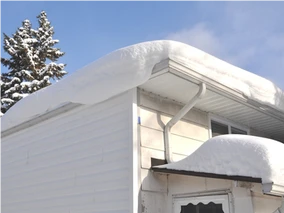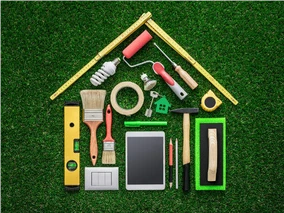
It's that time of year of again; the temperature has dropped, the clouds are rolling in, and everyone's lighting the fireplace. During a Stafford winter, the kids will probably be looking forward to the one thing that you may not: Heavy snowfall. You know that snow isn't just an inconvenience, it's a worry, and if you’re wondering about how the weather will effect your roof this winter, we're here to tell you what to look out for and what to do before that stress sends you climbing on top of your roof to get rid of all that snow.
Snow Damage: What to Look Out For
High Snow Loads
While most roofs in climates like in Stafford Virginia should be, by code, built to hold about 3 feet of snow, sometimes the snow can accumulate more than expected. If your roof doesn't collapse entirely, the weight of the snow might cause your ceiling to sag. If you see cracks forming in your drywall, that could be an immediate warning sign that the pressure is stressing the foundation of your house. Another sign that the snow is becoming too much is if you start seeing water spots on your ceiling.
Escalating Damage
If your roof is already unknowingly damaged or in need of replacement, the snow is going to make it worse. The thawing and freezing cycle that snow undergoes to become ice can pry loose shingles off the roof if the water can work its way underneath them. It can also open up roof seams where the caulking is loose and worsen faulty roof flashing. If any leaks spring up in your roof, it may be because of one of these problems.
Ice Dams and Icicles
A house without proper insulation will warm up the shingles of your roof while your heat is on, melting the snow on top. The water slides and drips down the edges, where it refreezes when the temperatures drop, turning back into ice. If this happens enough, it creates a wall of ice that traps any water from melted snow behind it, which can cause leaks since there won't be anywhere else for your water to go.
In the same fashion, icicles can form, likely underneath the ice dam, which can pose a potential danger to those who walk underneath them. If you see icicles hanging from your roof when you come outside, you'll want to knock them off.
Shoveling Damage: What to Do Instead
As previously mentioned, homes built to code can hold a great deal of snow and only snow. By getting on top of the roof, you'll be adding more weight to the roof and increasing the chance for roof sagging or failure. You might not think you add much more, but when your entire roof is piled high with snow, even the slightest bit of extra weight may prove to be detrimental. Not to mention, you risk slipping and falling, possibly endangering your life.
Instead of taking on the task, putting yourself in a dangerous situation, the smartest and safest option is to hire a contractor who offers roof snow removal to take on the job. Not only do they have the proper equipment to remove the snow and ice without damaging the roof or anything underneath it (like your car or other people), but they take on the risk. If applicable, you'll also want to look into better insulation on the inside of your house. Proper insulation could help prevent any of the problems, as mentioned above, from occurring in the future.
So, Should You Shovel?
With your best interest in mind, we would wager to say no. Winters in the greater Fredericksburg Virginia area rarely come with substantial snowfall, and trying to tidy up your roofing doesn't just put you at risk for slips and falls, but exposes you to crisp and frigid temperatures that can affect your body a lot worse if you're standing hip-deep in snow. What you want to do is call in the professionals so that you can stay warm, get the run-down on the condition of your roof, and get that snow safely removed.
If you have any concerns about your roof or possible damage to your roof, please contact us.
Subscribe to Fletcher Home's Blog





Comments